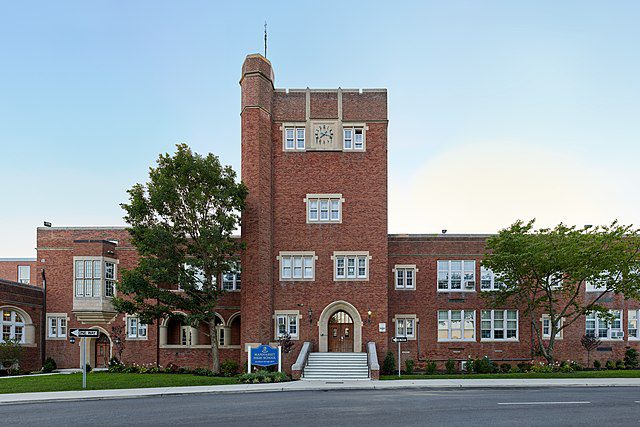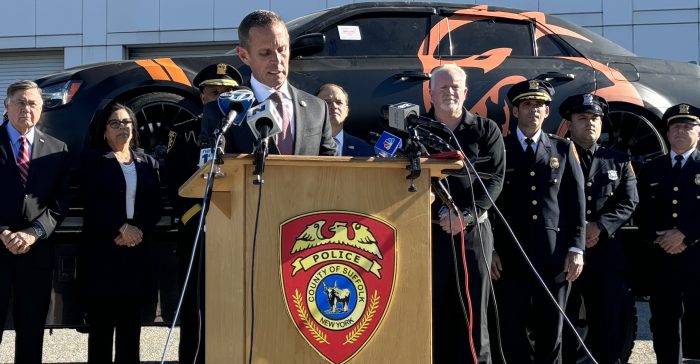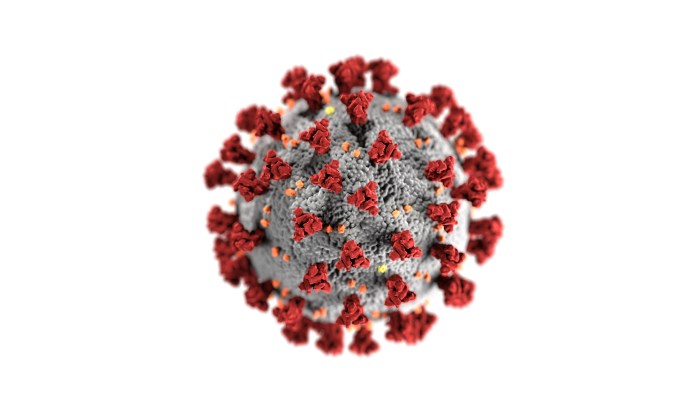
By Cyril Smith
As Garden City celebrates its centennial as a village, another centenary connected to Garden City was one of the biggest news stories of 1919.
On May 8, three large seaplanes took off from Rockaway Naval Air Station, near what is now Jacob Riis Park. Nearly three weeks later, the sole remaining aircraft, NC-4, arrived in Lisbon. It had achieved the first flight across the Atlantic.
These aircraft had been designed and built in the Curtiss Engineering plant at 71 Clinton Rd. In 1917, Glenn Curtiss had purchased the large plot of land from the Garden City Company for purposes of a research and design facility.
The Curtiss facility still exists with an almost pristine exterior appearance. The original tall smokestack, with “Curtiss” painted on it is still there. Likewise, Curtiss Engineering is embossed above the main entrance. The several story office building portion has been the location of Nassau BOCES for some time. A few decades ago it was Esselte Pendaflex.

The plant to its rear, stretching towards the U.S. Marine Base, is now a FedEx facility. The buildings are owned by Engel Burman. Between the office and plant is the offices for Engel Burman, located in the former Curtiss Power Plant.
Curtiss was a pioneer of early aviation and a prolific inventor. Many considered him to be more noteworthy in aviation than the Wright Brothers. From his original plant in Hammondsport, NY, his hometown, he had expanded to a second, larger plant in Buffalo.
The need to concentrate research and development and to be closer to the Wall Street financiers led him to Garden City. As with many new aviators, he knew this portion of Long Island was ideal for flying. He had flown several times to and from Garden City’s first airfield, Washington Avenue Airfield. This rudimentary dirt strip was adjacent and just east of Washington Avenue, opposite the Nassau County Courthouse. Several years ago, village historian Bill Bellmer placed a historical marker on this Field. It is on the grass strip entrance to the parking lot serving the offices along Old Country Road.
Curtiss first lived in a rental on Cathedral Avenue and Second Street. The house still stands today. The owner, Harvey Hubbell, in 1919 was a major mover in the consolidation and incorporation of the then three communities that became Garden City. Curtiss lived there a short while before purchasing the mansion on Nassau Boulevard and Stewart Avenue, the current site of the Unitarian Universalist Church. At the time it was the home of Gage Tarbell and was considered one of the most modern homes in the country. The Tarbell property spanned the entire block. Curtiss often bicycled to his plant. Like the Wright Brothers, Curtiss’s start was in bicycles and then motorcycles.
Curtiss had, with America’s entry into World War I in April 1917, designed a “super” seaplane to assist the anti-submarine patrols off the East Coast. German U-boats were active there, including the sinking of the USS San Diego off Fire Island.
The Armistice was declared before Curtiss had completed what was to be 10 Navy Curtiss (NC) aircraft. It was the Navy’s idea to then try to cross the Atlantic with three of these. These partially disassembled planes were hauled, via rail and horse-drawn dollies, to the Rockaways.

For the flight, the U.S. Navy stationed warships every 50 miles at sea as a safety precaution. One NC was unable to take off from Rockaway, a second unable to depart Halifax, Nova Scotia, their first leg, and a third ditched into the Atlantic during the second leg to the Azores. It “sailed” then to the Azores. NC-4 completed the Azores leg and then went onto Lisbon.
The world’s newspapers touted the feat of being ‘First Across the Pond’ and the crew of five returned to America as heroes, deservedly so. This was an open cockpit aircraft, bare-boned and rugged.
Charles Lindbergh’s flight, eight years later, was the first solo nonstop flight. Lindbergh in one of his post-flight interviews stated the real heroes are those of NC-4, noting they had to find a speck in the ocean (the Azores) and he had only to find a continent.
The NC-4 aircraft is in the U.S. Naval Aviation Museum in Pensacola, FL, an homage to early Naval aviation. The five-man crew had both U.S. Navy and Coast Guard members which related to both services having anti-sub responsibility in WWI.
When NC-4 was shipped back to Garden City for refurbishing, the tattered fuselage linen was cut into sections, framed and sold by the Navy as a fundraiser. These now rare relics are valuable among aviation buffs. The discovery of one by an antiques person, who did not know of it, was the subject of an episode of the PBS series, The History Detectives, several years back. The “pilot” filmed in that episode is a former Lt. Commander in the U.S. Navy and NC-4 buff. John Bayer visited with several Naval aviators in Garden City a number of years ago, at the invite of the author. They visited the Curtiss Plant, where NC-4 was built, and the Cradle of Aviation Museum in Mitchel Field. They also marched in the Garden City Memorial Day Parade that year, as they were in New York City for Fleet Week as aviators with the USS Iwo Jima, a Navy carrier. The Cradle of Aviation has a large scale model of NC-4 currently on display.































